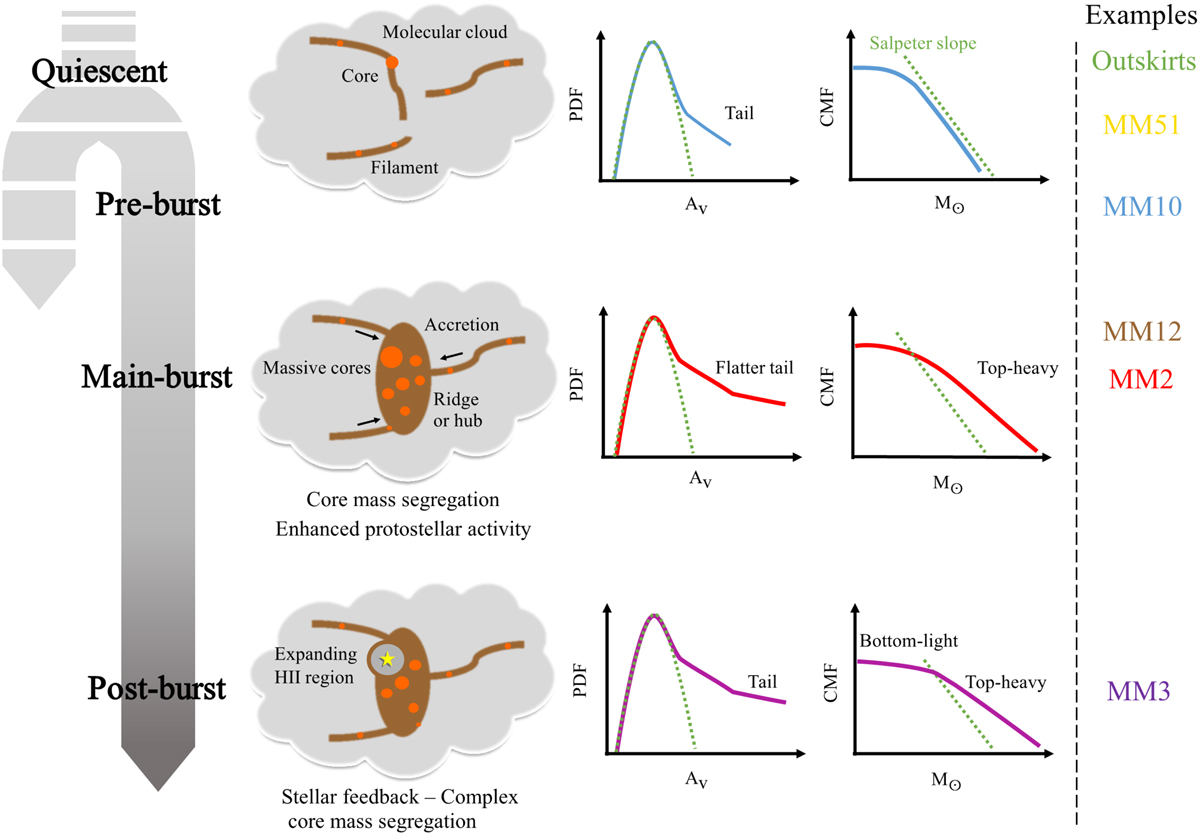Fig. 11

Download original image
Schematic evolutionary diagram of subregions in dynamical star-forming clouds, which are qualified as either quiescent or as pre-burst, main burst, or post-burst, determined by following the different phases before, during, and after their main star formation event. Their characteristics, including cloud column density, η-PDF, CMF, and core mass segregation, are illustrated. Top panels: subregions in quiescent or pre-burst regimes present a η-PDF tail close to that found in low-mass star-forming regions and a CMF high-mass end close to the Salpeter slope. Central panels: subregions in their main burst regime harbor an enhanced star formation activity and a strong core mass segregation. They display a η-PDF with a much flatter second tail as well as a top-heavy CMF. Bottom panels: post-burst subregions, under the influence of stellar feedback, have less sustained star formation activity and more complex core mass segregation. They also present a η-PDF with a flat second tail and a CMF that is both top-heavy and bottom-light. The location on the time sequence of the W43-MM2&MM3 subregions are given to summarize the result of the present article.
Current usage metrics show cumulative count of Article Views (full-text article views including HTML views, PDF and ePub downloads, according to the available data) and Abstracts Views on Vision4Press platform.
Data correspond to usage on the plateform after 2015. The current usage metrics is available 48-96 hours after online publication and is updated daily on week days.
Initial download of the metrics may take a while.


